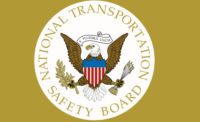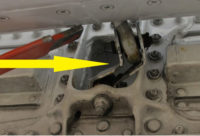The application of excessive reverse thrust during a landing at LaGuardia Airport, New York, March, 5, 2015, led to a loss of directional control and the passenger jet’s departure from the snow covered runway, according to findings of the National Transportation Safety Board (NTSB) announced during a public meeting on Tuesday.
Delta Airlines flight 1086 landed on LaGuardia Airport’s runway 13, veered to the left and departed the side of the runway, contacted the airport perimeter fence and came to rest with the airplane’s nose on an embankment next to Flushing Bay.
The NTSB investigation found that the probable cause of the accident – in which 29 of 127 passengers suffered minor injuries – was the captain’s inability to maintain directional control of the Boeing MD -88 due to his application of excessive reverse thrust, which degraded the effectiveness of the rudder in controlling the airplane heading. The aircraft was substantially damaged.
“The passengers and crew of Delta flight 1086 were fortunate to have survived this crash with no loss of life or serious injuries,” said NTSB Chairman Christopher Hart. “Proper use, in real time, of precise, accurate, and timely information about the condition of the runway can help make winter operations safer, as well as the study and use of large quantities of data to inform best practices. If today’s recommendations are acted upon, future landings on contaminated runways will be safer because of actions to enable the timely communication and use of information to eliminate potentially life-threatening unknowns.”
The NTSB investigation also revealed that, during the accident sequence, damage to the aircraft resulted in the loss of the interphone and public address system as methods of communication after the accident. As a result, the announcement to evacuate the aircraft was delayed and more than 17 minutes passed before all passengers were off the aircraft.
The NTSB made 10 recommendations to the Federal Aviation Administration, two to Boeing, one to the U.S. operators of MD-80 series airplanes, and one to the Port Authority of New York and New Jersey.
To view the accident investigation summary and resulting recommendations visit: http://go.usa.gov/xBB9k.






